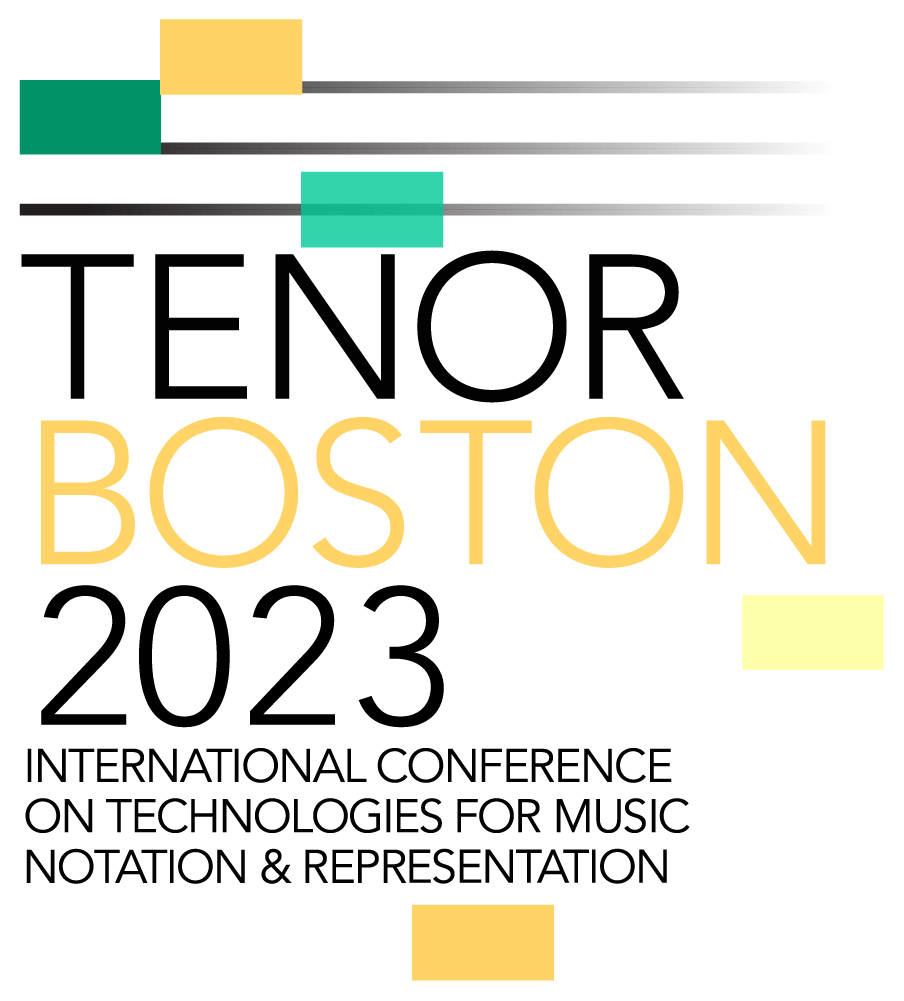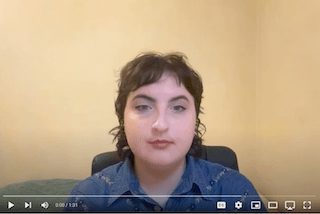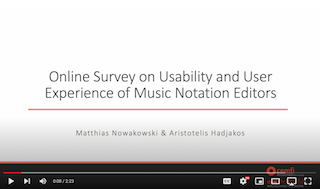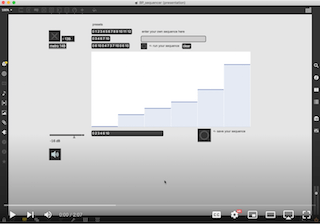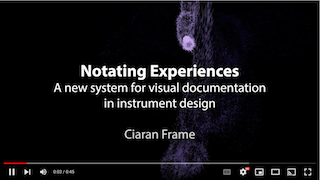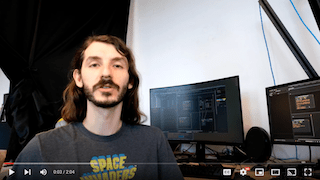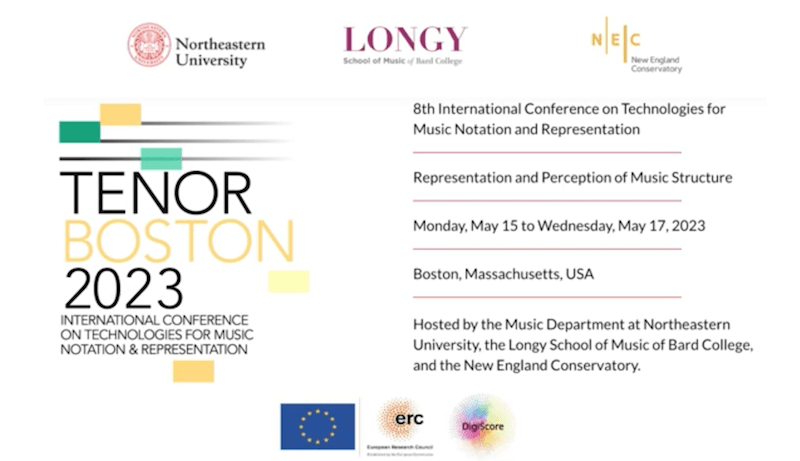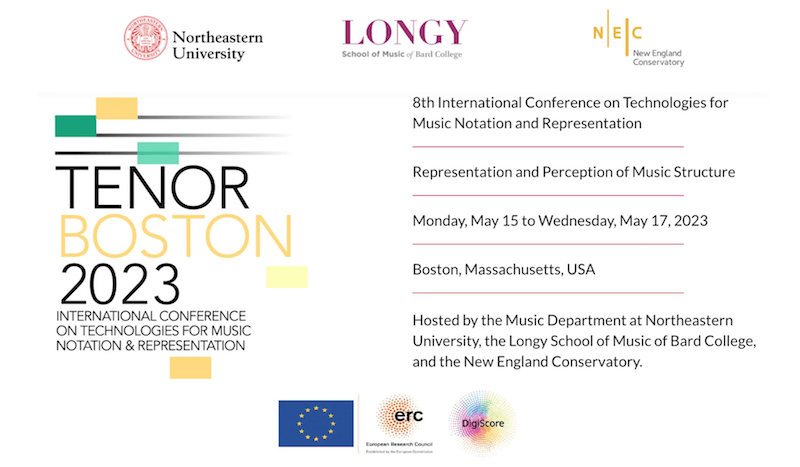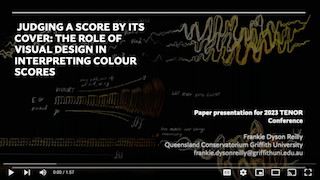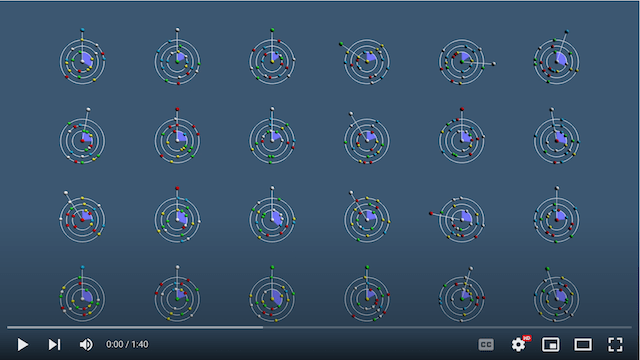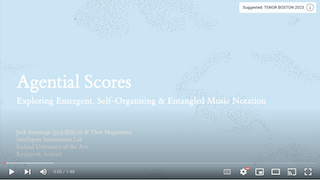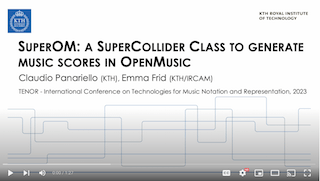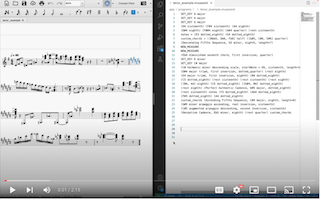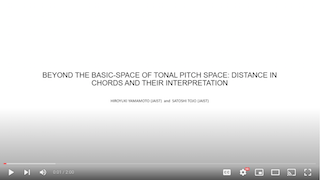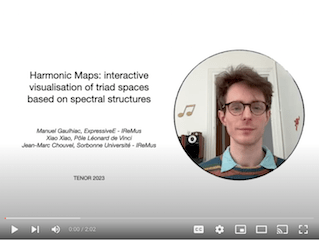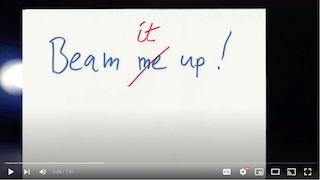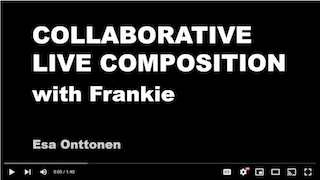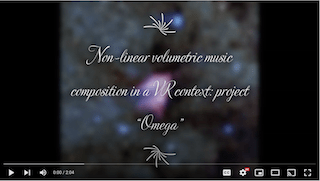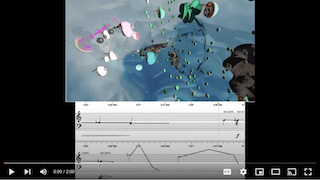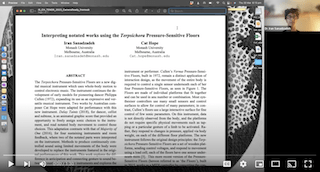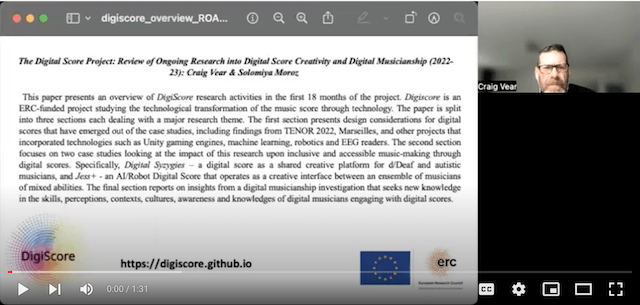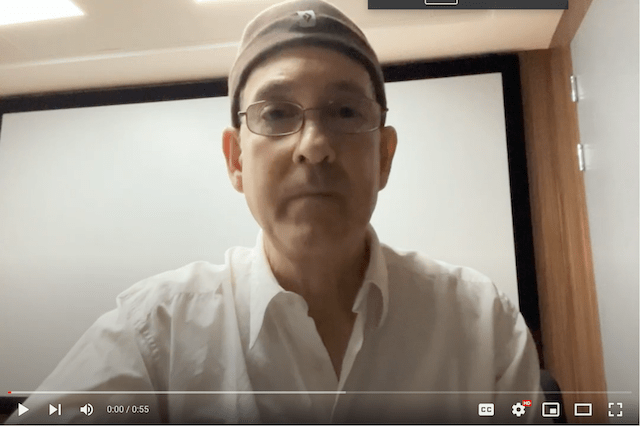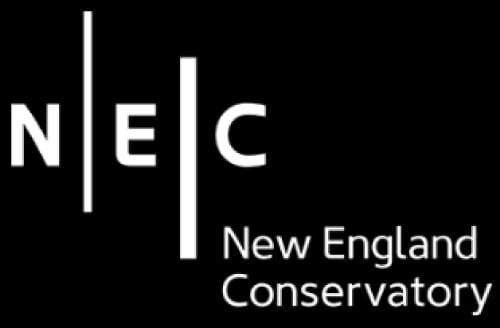TENOR BOSTON 2023
Schedule
May 15-17, 2023
International Conference on Technologies for Music Notation and Representation
Day(s)
:
Hour(s)
:
Minute(s)
:
Second(s)
TENOR BOSTON 2023: Schedule
For access to the DOI’s to individual papers from TENOR BOSTON 2023, please refer to Zenodo:
Accepted PAPERS, Workshops and Demos
THANK YOU to all authors who submitted papers to TENOR BOSTON 2023. There were many brilliant submissions, many more than we could accommodate in our conference. Special thanks to the external reviewers who participated in our double-blind external review process, for their comments and service to the profession. If you have any questions or concerns, please do not hesitate to contact Anthony De Ritis (Conference Chair), Jeremy Van Buskirk (Paper Chair), or Victor Zappi (Scientific Chair, and Overseer of Workshops and Demos).
Sunday
May 14
The Lilypad, 1353 Cambridge Street Cambridge, MA, 02139
Pre-Conference Performance and Social Event
9:30 pm – 11:00 pm
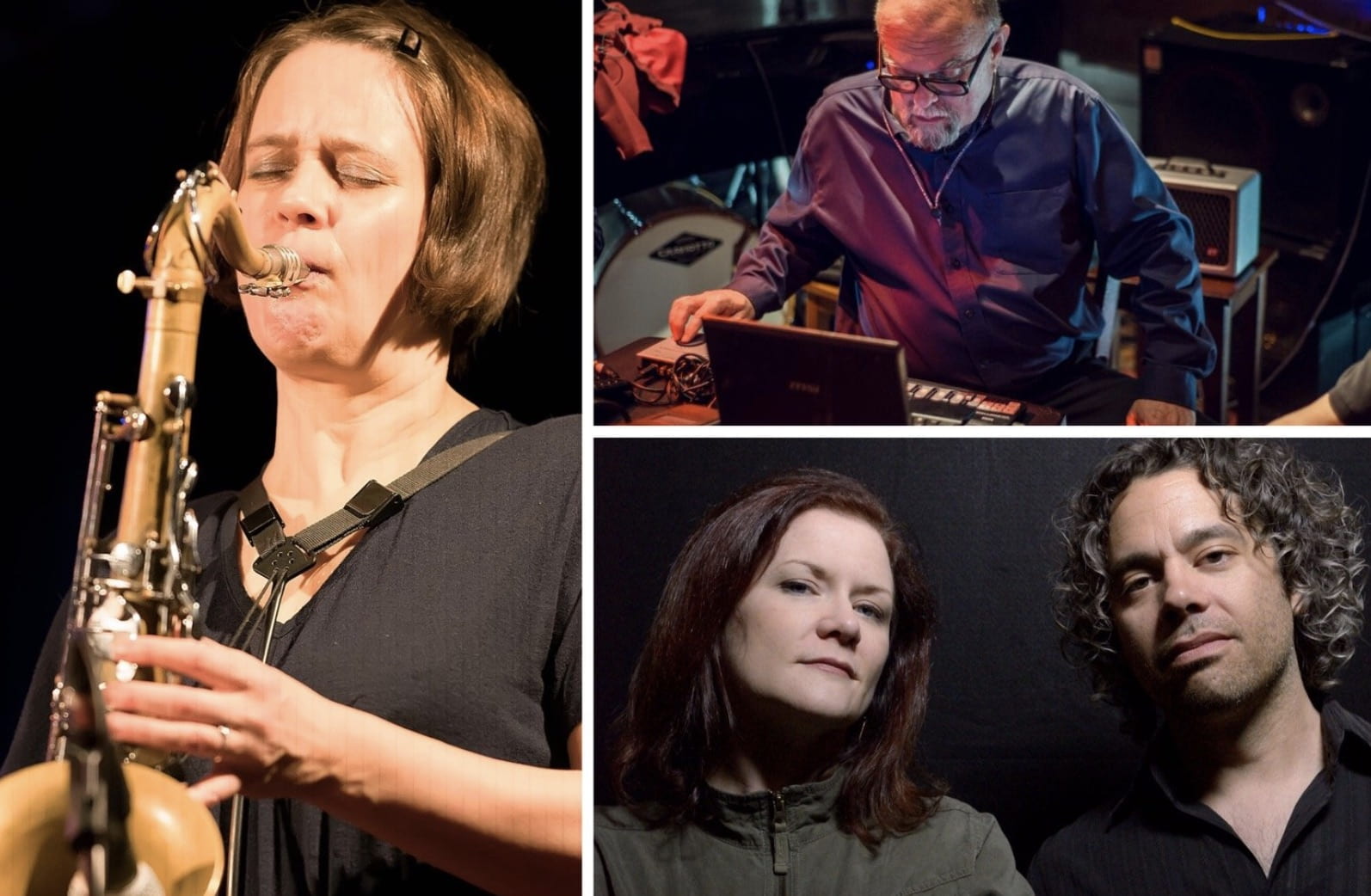
Ingrid Laubrock, saxophone; Tim Perkis, electronics; duoB (Lisa Mezzacappa, upright bass; Jason Levis, drums)
Wild West Quartet
Laubrock-Mezzacappa-Levis-Perkis
In town early? Check out TENOR BOSTON 2023 Ensemble in Residence duoB (Lisa Mezzacappa; upright bass; and Jason Levis, drums), DigiScore commissioned composer Ingird Laubrock, saxophone; and Keynote Workshop Presenter Tim Perkis, electronics; as the “Wild West Quartet: Laubrock-Mezzacappa-Levis-Perkis.” LIVE! Sunday, May 14, 2023; 9:30pm – 11:00pm at The Lilypad.
NOTE: this event is not an official part of TENOR BOSTON 2023, additional fees may apply
Monday
May 15
Northeastern University; Longy School of Music of Bard College
8:00 am
Sign in / Continental Breakfast / NORTHEASTERN UNIVERSITY [Ryder Hall Lobby]
9:00 am
Keynote 1 [NU; Ryder Hall, Rm. 429]
Morwaread Farbood
Representation and Perception of Music Structure
The way a performer interprets a score––or any representation of music––is based on historical, cultural, and cognitive factors that are specific to a musical style. The combination of both inherent structural features of the music as well as expressive features that result from a performer’s interpretation contribute to a listener’s experience of the music. These structural and expressive features all combine to create the percept of musical tension. The feeling of rising and falling tension in music is an essential aspect of how a performer interprets a score and how a listener enjoys and experiences a musical performance. Through a discussion of empirical work, this talk will elucidate how this concept of tension is a key aspect of how a musical score is composed, performed, and then perceived by a listener. Cross-modal aspects of tension, primarily in an audiovisual framework, are further explored from the perspective of multimedia experiences of music.
10:00 am
Session 1: Perception, Cognition, and Creativity I [NU; Ryder Hall, Rm. 429]
Moderator: Anthony De Ritis
Jaslyn Robertson
Structuring Censorship in Digital Scores
Digital scores allow for new ways to experiment with agency and perception within composition and performance. My recent works Censoring Experiment and Shadow Aria examine the possibilities for digital scores to incorporate methods of censorship with the aim of highlighting and unpacking the social issue. Despite an assumption that censorship is an issue of the past or limited to non-western countries, recent cases of artistic censorship in Australia and North America have brought attention to the ongoing problem, particularly as it affects marginalised artists and composers. In this paper, I discuss my two pieces that attempt to address, complicate, and subvert the issue of artistic censorship through experimental composition. Digital notation is the medium that allows these pieces to exaggerate real censorship and test how performers react creatively to censored environments. I argue that animated notation and mixed-media environments created through technology give me the ability to replicate and change a real-life social issue within a performance, letting my art not just comment on a political question, but work towards new insights through practice-based research.
10:20 am
Matthias Nowakowski, Aristotelis Hadjakos
Online Survey on Usability and User Experience of Music Notation Editors
Although one can see a certain convergence between the interaction designs of different notation editors, there is no general consensus or standard since new interaction paradigms keep appearing with most major software updates or new products. In this paper, we present the results from an online survey (n = 138) with standardized usability and user experience questionnaires. The users of digital notation editors were asked to fill out the System Usability Score, the AttrakDiff2 and the Liveness questionnaire. This provides insights into domain specific design problems with the goal to inform the design of future interfaces. Almost all music notation editors show clear deficiencies in overall usability. Furthermore, a detailed examination of the obtained metrics show specific dependencies of individual qualities, which are helpful to conduct further qualitative research.
10:40 am
Psyche Loui
BP Sequencer: A Low-Barrier-to-Entry Assessment Tool for Musical Creativity
This paper introduces a newly designed sequencer of music in the Bohlen-Pierce (BP) scale to assess creative perception and cognition. We begin with a brief overview of scientific studies on musical creativity, leading up to a gap in the field that is unaddressed by traditional studies that compare different forms of musical training and instrument-dependent output for understanding creativity. We then introduce the novel BP sequencer, an experimental interface that affords generating and rating the creativity of novel musical sequences that are uniquely composed in the Bohlen-Pierce scale. We then report three preliminary experiments in which we quantify the number of sequences generated by each individual and isolate the musical-informatic features that were rated as more creative. Participants showed a wide range of creativity in generating novel sequences. Sequences that were rated as more creative were generally longer, had more unique pitches, and had more different interval sizes. Furthermore, a preliminary electrophysiological (EEG) study quantifies three distinct candidate biomarkers for the perception of musical creativity. This novel sequencer of Bohlen-Pierce scale music can provide a useful tool for assessing creative perception and cognition. The code for this tool is freely available, along with video tutorials and documentation.
11:00 am
Coffee BREAK / Flex Time
11:20 am
Session 2: Non-Standard Notation and Alternative Scores I. [NU; Ryder Hall, Rm. 429]
Moderator: Psyche Loui
Ciaran Frame
Notating Experiences: A New System for Visual Documentation in Instrument Design
In the community of Digital Musical Instruments (DMIs), documentation surrounding iterative interactions and the creation of mappings is largely absent from DMI projects beyond the recording of a performance or subsequent evaluation with a performer. This is because the performance or interactive experience with the instrument is often viewed as the end point for a DMI project, and the description of a mapping or open-sourcing of software considered the ‘score’. This paper outlines the creation of a visual notation based on unique interactions with the AirSticks, a gestural musical instrument. These notations expand on the concept of descriptive notation, creating a form of retrospective score and record-keeping for instrument designers. By capturing the intimate experiences and musical collaborations that contribute to the iterative design of the instrument, it is concluded the notation system provides an avenue for critical analysis that will aid the further development of DMIs.
11:40 am
Jean-Michaël Celerier, Akané Levy [remote]
A notation system for distributed media art
Music, and media art in general, is often a collaborative process involving at first groups of individuals, and nowadays of computers, working together for the performance of media artworks. Interactive, intermedia scores are scoring systems which enable composers to specify temporal evolutions and variations of such multimedia systems. We will introduce a visual notation and its execution semantics for distribution of the interpretation and execution of such scores over a computer network. For instance, we will show how one can write and execute a score which specifies: part A plays on a first group of computers, followed by part B on a second group of computers, while a parallel part C containing a synchronized video effect is being played on a separate machine with dedicated video hardware. Based on the pre-existing scoring environment ossia score, we will cover how the extensions interact with the existing semantics, and present a set of small distributed scores which enables varied behaviours to be defined by the composer from our proposed set of nine temporal and three dataflow primitives for distribution.
12:00 pm
Workshop Keynote [NU; Ryder Hall, Rm. 354]
Tim Perkis, Gino Robair
Two Automatic Score-Presentation Systems to Direct and Shape Improvisational Music Practices
Tim Perkis, in collaboration with his development partner Gino Robair, will present two automatic score-presentation systems that explore different ways to use computer systems to direct and shape improvisational music practices, notation systems that support ensemble playing in the space linking improvisation and composition. The first, nettet, presents graphical, musical score-material to players in an ensemble. In this system, a conductor chooses from a set of images they have collected beforehand, and at different times during a performance they can send score pages, either to the entire ensemble or to subsets of the ensemble, which appear on the players’ individual laptops or tablets. In this version the score pages are simply image files, which can contain any graphic element, including but not limited to fragments of conventional notation. The second, xband, is focused on the presentation of more conventional music notation. A player of an electronic musical instrument (in this case, Perkis) improvises musical phrases which are captured in a memory bank. The conductor (Robair) manages this collection and can apply various transformative functions to the saved phrases, and then decide if and when they may be passed on to a player’s tablet display, rendered as conventional musical notation. In addition, the conductor gives visual cues to the players that indicate various styles of engagement with the material; for example, whether to play in unison or solo freely, tempo and feel suggestions, as well as other more particular cues that the ensemble may learn in rehearsal. In this workshop session we invite and encourage conference attendees to participate in our workshop’s performing ensemble in order to enhance the workshop experience!
1:00 pm
LUNCH (by Northeastern University); Ryder Hall Lobby
2:00 pm
Shift to LONGY SCHOOL OF MUSIC OF BARD COLLEGE
NOTE: there is a 6-mile distance between Northeastern and Longy: 15-20 minutes via Uber; 40-45 minutes via metro. Please be sure to give yourself enough time to make the necessary transfer.
2:40 pm
WORKSHOP [Longy; Zabriskie House, Alternative Performance Space]
Georg Hajdu
Hybridity in Composing for and Performing with Microtonal Ensembles
This workshop gives an introduction to how to prepare materials for microtonal performance, particularly for the Bohlen-Pierce scale. Microtonal ensembles often consist of a mix of instruments with different playing styles necessitating a hybrid approach to music notation. We are distinguishing between logical, instrumental and habitual notation styles which are usually mixed in a score. The software MaxScore offers several tools facilitating the process of creating hybrid scores via bi-directional mapping of semantic data to their graphical representation. A plugin structure allows users to add maps on the fly and thus increase the repertoire of new staff styles. In this workshop, a scenario of a recent performance will be presented which consisted of 11 instruments and 8 singers performing in the Bohlen-Pierce scale, and it will be shown how to add a plugin for a new staff style. Participants are required to have a laptop with Max and MaxScore installed.
WORKSHOP [Longy; Rey-Waldstein Building, Rm. N-1]
Jean-Michaël Celerier [remote]
Ossia score 3 workshop
This workshop will give an overview and teach the participants how to use the free and open-source software ossia score in its version 3. Dubbed “interactive sequencer for the intermedia arts”, it is a system which combines both the non-linear time-lines and the data-flow paradigms to allow artists to author evolving multimedia artworks, musical pieces, museum installations, etc. Version 3 introduces support for a real-time GPU-enabled video pipeline seamlessly integrated with the rest of the system, live-coding for C++ (and many other languages), support for tempo, musical metrics, hierarchical polyrhythms, distributed and collaborative edition and execution and a generalized looping primitive for its interactive time-line among other features. For the best experience, participants should have some pre-existing knowledge in how to use either DAWs (Ableton Live, Cubase), patching systems (Max/MSP, PureData, TouchDesigner…) or audio coding languages (Faust, ChucK, SuperCollider), and bring their own laptop to the workshop.
4:00 pm
WORKSHOP [Longy; Zabriskie House, Alternative Performance Space]
Ryan Smith
The Animated Notation Workshop 2.0
The author of the Animated Notation Workshop has been researching and creating animated notational approaches for over a decade and this workshop will focus on recent work in the production of real-time notation in what might be considered a more-improvisatory way. To this end, the Animated Notation Workshop will delve into the general functionalities and purposes of Animated Notation using a browser-based score generator designed by the author. During the workshop, attendees will have an opportunity to explore the compositional, improvisational, performative and pedagogical aspects of the creation of real-time, necessarily-dynamic notation. A collection of small percussion instruments will be provided by the author but attendees are also encouraged to bring their own instruments, although this is not at all necessary.
WORKSHOP [Longy; Rey-Waldstein Building, Rm. N-1]
Shane McKenna
New Notation and Technology: The Revolution in Music Education
Discover how an online platform using non-traditional notation has revolutionised classroom music teaching in Ireland. Experience a system of music education designed to democratise listening, performing and composing for teachers and young students. The workshop will be led by Shane Mc Kenna who has developed this system over the lats 15 years through performances, workshops, field research and development. The workshop will explore everything from graphic notation and animated graphic notation to realtime interactive performance systems. Each activity has been specifically designed to be accessible, engaging and creative for both non-specialist and experienced music teachers and all students regardless of prior musical experience. Participants will be guided through musical activities using a selection of simple percussion instruments or whatever instruments they wish to bring along.
5:00 pm
6:30 pm
DINNER (on your own)
8:00 pm
9:00 pm
Informal Gatherings
Tuesday
May 16
Northeastern University; New England Conservatory
8:00 am
Sign in / Continental Breakfast / NORTHEASTERN UNIVERSITY
9:00 am
Keynote 2 [NU, Ryder Hall, Rm. 429]
Holly Watkins
Conception and Perception, Structure and Form: Thoughts on the Representation of Animal Song
Over the past few decades, spectrograms have become a powerful tool for representing and analyzing animal vocalizations. In the case of birdsong, spectrograms have joined a number of techniques historically used to represent the sounds of birds, including translation into linguistic syllables and musical notation. As with any technique of representation, however, spectrograms capture only certain aspects of birdsong as a total phenomenon, affording particular interpretations that privilege the sonic signal over its broader ecological significance. This paper explores current resources for analyzing birdsong and differentiates between structure and form in order to accommodate affective and aesthetic responses to animal voices.
10:00 am
Session 3: Non-Standard Notation and Alternative Scores II [NU; Ryder Hall, Rm. 429]
Moderator: Anthony De Ritis
Nicola Privato, Thor Magnusson, Einar Torfi Einarsson
The Magnetic Score: Somatosensory Inscriptions and Relational Design in The Instrument-Score
With the changes occurring in the dialectics between the composer and the interpreter during the second half of the twentieth century, the traditional concept of the musical score has undergone an ontological change. As composers began exploring unconventional notational practices and offering to the interpreter a higher autonomy in relating with the musical material, the locus of the musical information has become less defined, at times merging with that of the instrument. In this paper we explore the dual nature of notation both as score and as instrument from the point of view of non-visual methods of representation. We do this by presenting the Magnetic Score, a system for the inscription and generation of sound that relies on permanent magnetic fields. In magnetic scores, the relational design of the inscriptions and the interdependence of the symbolic and somatosensory layers offer original insights on the role and situatedness of the musical score in contemporary practices, as the performative gestures emerge out of the interpreter’s embodied interaction with the magnetic fields.
10:20 am
David Kim-Boyle [ video presentation ]
The Reactive Score
Scores designed to be displayed on screens provide the opportunity for composers to dynamically update information and musical instructions presented to performers during the moment of performance. Such scores may be responsive to the agency of performers or audience members, providing new forms of structural organization or ways in which denoted musical material can be transformed. This paper explores the creative possibilities of such reactive scores and situates them within a historical tradition of malleable notation. Two works by the author are discussed in which real-time features of the musical performance drive the notational transformations of the performance score.
10:40 am
Jack Armitage, Thor Magnusson
Agential Scores: Artificial Life for Emergent, Self-Organising and Entangled Music Notation
Dynamic scores have become a popular intervention into musical performance, with novelty both for the performer and the audience. In this paper we describe agential scores and the implications of their emergent, self-organising and entanglement affordances for musical performance ecologies. We do so through practice-based research, introducing Tolvera, an ALife software library for agential scores. We offer a typology of interaction scenarios for agential scores, and explore a subset of these, presenting the outcomes of early artistic encounters with Tolvera between two improvising guitarists. Reflecting on our encounters, we highlight unique issues that arise out of engaging with scores as real-time agents, proposing that agential scores encourage fluidity of form in notation, which in turn provokes performers to identify with, mirror and attune to them. Though scores have always had agency, we find their rapidly increasing agency poses new questions, and new possibilities for the intra-actions between the human and non-human agents of musical ecologies.
11:00 am
Coffee BREAK / Flex Time
11:20 am
Session 4: Score Processing and Generation I [NU; Ryder Hall, Rm. 429]
Moderator: Ronald Bruce Smith
Gen Hori [remote]
Enumerating Left Hand Forms for Guitar Tablatures Using Non-Decreasing Finger Numbers and Separators
We point out that fingering decisions of string instruments and other instruments differ in that the former involves string assignments as well as finger assignments while the latter is simply a matter of assigning fingers to notes. The present study introduces a three-level model for fingering decision of string instruments to describe the structure of the problem and present problem settings of fingering decision based on the model. as well as a new idea for enumeration of left hand forms for guitar tablatures using nondecreasing finger numbers and separators.
11:40 am
Claudio Panariello, Emma Frid [remote]
SuperOM: A SuperCollider Class to Generate Music Scores in OpenMusic
This paper introduces OMClass, a class built for the software SuperCollider in order to create a bridge to OpenMusic and thus facilitate the creation of musical scores from SuperCollider patches. OMClass is primarily intended to be used as a tool for SuperCollider users who make use of assisted composition techniques and want the output of such processes to be captured through automatic notation transcription. This paper first presents an overview of existing transcription tools for SuperCollider, followed by a detailed description of OMClass and its implementation, as well as examples of how it can be used in practice. Finally, a case study in which the transcription tool was used as an assistive composition tool to generate the score of a sonification – which later was turned into a piano piece – is discussed.
12:00 pm
Ilana Shapiro [remote]
MusAssist: A Domain Specific Language for Music Notation
MusAssist is an external, declarative, domain specific language for music notation that bridges the abstraction gap between music theory and composition. Users can describe uniquely high-level templates for chords and arpeggios (all triads and seventh chords), scales (diatonic, chromatic and whole tone), the five primary cadences, and the four primary harmonic sequences with desired length. Distinctively, MusAssist matches the level of abstraction of a template to the theoretical musical structure it describes (e.g. users can specify a harmonic sequence without needing to manually expand it to the chords and notes it comprises). Thus, users can write out specifications precisely at the conceptual levels of the musical structures they would organically conceive when composing by hand. In MusAssist, users can also change key signatures, start a new measure, and describe fundamental musical objects such as notes, rests, and customized chords. The Haskell-based MusAssist compiler expands high-level templates (thus lowering the level of abstraction to individual notes) and translates the program to MusicXML, a language accepted by most major music notation software, for further manual editing and playback.
12:20 pm
Coffee BREAK / Flex Time; [Ryder Hall Lobby]
12:40 pm
Session 5: New Approaches to Visualizing Harmonic Content [NU; Ryder Hall, Rm. 429]
Moderator: Anthony De Ritis
Hiroyuki Yamamoto, Satoshi Tojo [remote]
Beyond The Basic-Space of Tonal Pitch Space: Distance in Chords and Their Interpretation
Tonal Pitch Space (TPS) defines a numerical distance between two chord interpretations. Although it is based on musical knowledge and theory, the structure and values are not defined in an objective manner. Preceding works have addressed this problem, and TPS has been revised and optimized the definitions of distance, in the interpretation of chord paths, given chord names. In these former works, which notions that appear in TPS work contribute to the distance has not been clarified; among which the contribution of the basic-space is rather ambiguous. In this study, we modify the task to incorporate pitch class (PC) information so that we can not only train other distance models that concern PC but also compare their performance with that of basic-space. We show that the data-oriented approach improves the accuracy from the original basic-space, especially when we add a distinction of major and minor keys.
1:00 pm
Manuel Gaulhiac, Xiao Xiao, Jean-Marc Chouvel
Harmonic Maps – Interactive Visualization Of 3-Note Chord Spaces Based on Spectral Structures
We present Harmonic Maps, a visualization of three-note chord spaces and an interactive application that allows users to explore in real-time the connection between the visualization and its mapped sounds. While typical harmonic analysis is based only on notes or on an audio signal, our analysis takes a hybrid approach by quantifying different types of interactions between the spectra of notes. These quantifications, which we call Harmonic Descriptors, are derived from acoustic or perceptual models. Three such descriptors are defined and mapped: concordance, third order concordance and roughness. Harmonic analysis based on spectral structures opens new possibilities beyond traditional note-only or signal-only approaches. They can be applied to a continuum of frequencies, independent of the tuning system, as well as historical and stylistic constraints. Harmonic Maps based on spectral structures can be especially relevant to study the relationship between timbre and harmony. Our interactive exploration of harmonic spaces can have applications for analytical, compositional and educational purposes.
1:20 pm
LUNCH (by Northeastern University); [Ryder Hall Lobby]
2:00 pm
Shift to NEC (NEW ENGLAND CONSERVATORY)
2:30 pm
DEMO [NEC; Student Life and Performance Center, Prevost 315]
Viktor Khachtchanski, J. Byron Wise [remote]
Buddha Orchestra – Music Found in Images
What captivates us to create? Insatiable possibilities in the pursuit of a good idea? Buddha Orchestra is an endless wellspring for the gestation of thought sonic poetry. This Open Source software for creatives is not a generative tool in as much as a reflection of the user’s esthetic. Perhaps you draw, doodle, or paint but have never considered sound craft or sonic collage. Maybe as a creative, you compose but are looking for another tool to exact your creative intention. Buddha Orchestra creates music from images. It does so in a way that is quick and easy to understand. We hope to inspire your creative play with this unique tool for composition and discovery.
WORKSHOP [NEC; Pierce Hall; SB 118]
Lisa Mezzacappa (2:30pm – 3:30pm)
Improvisation Workshop
San Francisco Bay Area bassist and composer Lisa Mezzacappa leads an interactive workshop in structured improvisation using graphic notation, images, and text called up via a simple Max patch designed by composer and technologist John Mallia. All are welcome to participate – come prepared to play.
3:00 pm
DEMO [NEC; Student Life and Performance Center, Prevost 315]
Craig Vear
Jess+ an AI/Robot Digital Score that operates as a creative interface between an ensemble of musicians of mixed abilities
Jess+ is an AI/Robot Digital Score that operates as a creative interface between an ensemble of musicians of mixed abilities. The AI and robotic technologies are used to extend the creativity of disabled musicians. The creative AI and the disabled musician work as an extended system, with each feeding the other. This demo will explain the technical design of the AI and robot, and outline the findings from an ongoing case study with Jess+. There is also an opportunity for delegates to play with this digital score.
3:30 pm
DEMO [NEC; Student Life and Performance Center, Prevost 315]
Ilana Shapiro [remote]
MusAssist: A Domain Specific Language for Music Notation
MusAssist is an external, declarative, domain specific language for music notation that bridges the abstraction gap between music theory and composition. Users can describe uniquely high-level templates for chords and arpeggios (all triads and seventh chords), scales (diatonic, chromatic and whole tone), the five primary cadences, and the four primary harmonic sequences with desired length. Distinctively, MusAssist matches the level of abstraction of a template to the theoretical musical structure it describes (e.g. users can specify a harmonic sequence without needing to manually expand it to the chords and notes it comprises). Thus, users can write out specifications precisely at the conceptual levels of the musical structures they would organically conceive when composing by hand. In MusAssist, users can also change key signatures, start a new measure, and describe fundamental musical objects such as notes, rests, and customized chords. The Haskell-based MusAssist compiler expands high-level templates (thus lowering the level of abstraction to individual notes) and translates the program to MusicXML, a language accepted by most major music notation software, for further manual editing and playback.
DEMO [NEC; Pierce Hall; SB 118]
Nicola Privato, Thor Magnusson, Einar Torfi Einarsson
The Magnetic Score: Somatosensory Inscriptions and Relational Design in the Instrument-Score
With the changes occurring in the dialectics between the composer and the interpreter during the second half of the twentieth century, the traditional concept of the musical score has undergone an ontological change. As composers began exploring unconventional notational practices and offering to the interpreter a higher autonomy in relating with the musical material, the locus of the musical information has become less defined, at times merging with that of the instrument. In this paper we explore the dual nature of notation both as score and as instrument from the point of view of non-visual methods of representation. We do this by presenting the Magnetic Score, a system for the inscription and generation of sound that relies on permanent magnetic fields. In magnetic scores, the relational design of the inscriptions and the interdependence of the symbolic and somatosensory layers offer original insights on the role and situatedness of the musical score in contemporary practices, as the performative gestures emerge out of the interpreter’s embodied interaction with the magnetic fields.
4:00 pm
DEMO [NEC; Student Life and Performance Center, Prevost 315]
James Tsz-Him Cheung
Creating Common Practice Notation in Symbolist
This demo session explores the use of Symbolist, a multimedia notation program, for creating common practice music notation. Our project aims to investigate the feasibility of using Symbolist’s user-customizable symbols, which are mapped from semantic data, to create visually appealing common practice music scores according to the SMuFL protocol. During the demo, we will present our findings and demonstrate how Symbolist’s unique approach to notation can streamline the notation process and enhance the quality and accuracy of music scores. We will also discuss the potential for integrating this approach into the score display of MaxScore, and the benefits of doing so, including improved stability, render quality, and speed. Our demo will showcase the versatility of the symbols defined using Symbolist’s API, such as the ability to place clefs on any line and adjust the placement of accidentals in key signatures, as well as the support for microtonal notations.
DEMO [NEC; Pierce Hall, SB 118]
Jack Armitage, Thor Magnusson
Agential Scores: Artificial Life for Emergent, Self-Organising and Entangled Music Notation
Dynamic scores have become a popular intervention into musical performance, with novelty both for the performer and the audience. In this paper we describe agential scores and the implications of their emergent, self-organising and entanglement affordances for musical performance ecologies. We do so through practice-based research, introducing Tolvera, an ALife software library for agential scores. We offer a typology of interaction scenarios for agential scores, and explore a subset of these, presenting the outcomes of early artistic encounters with Tolvera between two improvising guitarists. Reflecting on our encounters, we highlight unique issues that arise out of engaging with scores as real-time agents, proposing that agential scores encourage fluidity of form in notation, which in turn provokes performers to identify with, mirror and attune to them. Though scores have always had agency, we find their rapidly increasing agency poses new questions, and new possibilities for the intra-actions between the human and non-human agents of musical ecologies.
4:30 pm
DEMO [NEC; Student Life and Performance Center, Prevost 315]
Dard Neuman, Jonathan Myers
Interactive Digital Transcription Platform for Oral Melodic Traditions
The “Interactive Digital Transcription Platform” (IDTP) is a new web-based application that allows for the accurate transcription, archiving, sharing, and quantitative analysis of oral melodic and improvisational traditions. This demonstration will present how the IDTP can open up fundamentally new areas in music theoretical and empirical research as well as provide new pedagogical resources. These new affordances are possible due to a rethinking of a foundational music-theoretical tenet: namely, that the fixed-pitch note in a twelve tone equal-tempered scale is the basic unit of structure for music making, transcription, notation, and analysis. By contrast, the IDTP is organized around a relationally dynamic tuning system and a succession of “trajectories,” formally specified archetypal paths from one pitch to another. This workshop will demonstrate how to use the IDTP’s transcription editor and analysis suite in the context of Hindustani music recordings and corresponding datasets and data visualization.
DEMO [NEC; Pierce Hall, SB 118]
Craig Vear
Neoscore – Notation without bars
Neoscore is a Python programming library for creating scores without limits. While other notation software assumes scores follow a narrow set of rules, neoscore treats scores as shapes and text with as few assumptions as possible. In neoscore, staves and noteheads are just one way of writing. This introductory session will take the participants through the entry stages of building a score in neoscore. Through this it will introduce some of the extended features and API in order to develop their own work at their own pace. Ideally some knowledge of modern programming language is helpful, but participants without this can buddy with someone who has.
5:00 pm
6:30 pm
DINNER (on your own)
8:00 pm
9:00 pm
Informal Gatherings
Wednesday
May 17
Northeastern University
8:00 am
Sign in / Continental Breakfast / NORTHEASTERN UNIVERSITY [Ryder Hall Lobby]
9:00 am
Session 6: Score Processing and Generation II [Ryder Hall, Rm. 429]
Moderator: Victor Zappi
Markus Lepper, Baltasar Trancón Y Widemann
Beam It Up! — A Classification Grid for Historic and Contemporary Practices Of Beaming By Mathematical Re-Modelling
In conventional Common Western Notation (CWN) there are different notations styles for flags and beams, evolved historically. We present a classification based on an algorithm which sets beams according to positions in a musical metric space. This algorithm contributes to more clarity also for the human discussion of the historic phenomena thanks to its stratified architecture: (a) assignment of canonical beaming to nodes of the metric tree, then (b) data transformations coming from pauses, dotted notations, etc., (c) breaking of beams according to further parameters like motifs, playing techniques, etc., and finally (d) transformations according to the needs of graphic appearance. For phases (a) and (b) an exact algorithm is presented; for (c) and (d) a semi-formal classification grid.
9:20 am
Georg Hajdu, Xiao Fu
Sonification, Musification and Dramafication of Astronomical Data in The Multimedia Production “A Space Journey”
In this paper, we will discuss, in the context of a recent multimedia production at the Hamburg University of Music and Drama, the notions and concepts surrounding the musical treatment of astronomical data. We will make the distinction between the three categories of sonification, musification and dramafication as being a continuum in terms of how accurately the underlying data are represented, and give examples for their application in the multimedia production.
9:40 am
Esa Onttonen
Collaborative Live Composition with Frankie
This paper describes a web application being developed for the purpose of collaborative live composition. In this concept, musical information such as pitch sets, chord progressions and textual parameters can be created and communicated in real-time by all members of the group. Primarily designed for tablets, the application aims for high usability values and has been tested and developed with professional jazz musicians. This paper presents the background for the concept of collaborative live composition, along with the main features, design principles and the development process of the application. Finally, the paper describes a concert performance and reflects on the affordances, opportunities, and challenges of the concept.
10:00 am
Coffee BREAK / Flex Time [Ryder Hall Lobby]
10:20 am
Session 7: Interpreting Creative Spaces [NU, Ryder Hall, Rm. 429]
Moderator: James Gutierrez
Anna Shvets, Samer Darkazanli [ remote ]
Non-Linear Volumetric Music Composition in A VR Context: Project “Omega”
Technological progress in development of XR creative spaces influences our perception of the piece of art. The use of gestural control enables interaction with the spatially distributed elements and creates conditions, where the user participates in a co-creation of a virtual experience. When applied to music art, the spatialization along with interactivity promotes non-linearity of musical structure, resulting in a new instance of music, out of the initial set of possibilities. In this article, we present a concept of a volumetric music composition, which maps music form to a 3D VR space, with a possibility of a variance at each mapping point. We implement a concept in a volumetric VR music composition “Omega”, which allows the user to choose between two alternative paths at each stage of the form development. The user’s action affects not only the changes in music, but triggers the colorization of the surrounding space, color being the reflection of the chosen musical path. Along with the music form spatialization and surroundings colorization, we integrate the paths of gestural movement, which user may choose to follow, adding visual aesthetics to the act of music creation. The synesthetic nature of the composition tightly binds music, color, 3D space and movement into one act of expression in a cocreation of a musical form. The article describes the context, philosophy and details of realisation of the concept’s practical implementation.
10:40 am
Jonathan Bell [remote]
Maps As Scores: “Timbre Space” Representations in Corpus-Based Concatenative Synthesis
The present study investigates ways in which the “timbre space” metaphor may be used in creative ways for instrumental composition. Numerous tools for concatenative sound synthesis share today the ability to represent in an ndimensional space large quantities of sound, thus displaying on a map data which originally unfolded in time. If the potential of such systems for creating interactive instruments is an evidence, their affordance as musical scores needs further assessment, for control over time becomes unknown territory. When porting to VR such representation of sonic data, the score becomes a 3-dimensional map (or world) in which the user typically navigates freely. Experimentation through composition, instrument design and improvisation have shown a potential of simulation of plausibly automatised acoustical instrument, using machine learning techniques to model virtual instruments out of relatively small quantities of data (e.g. 20 minutes of audio to model a clarinet). The method offers promising avenues for the exploration of instrumental fragments clustered by timbre, register, dynamic, instrumental techniques. Whether or not such maps identify as musical scores, they contribute to addressing a problem formulated by Lev Manovitch: “how to merge database and narrative into a new form”.
11:00 am
Iran Sanadzadeh, Cat Hope
Interpreting notated works using the Terpsichora Pressure-Sensitive Floors
The Terpsichora Pressure-Sensitive Floors are a new digital musical instrument which uses whole-body motion to control electronic music. The instrument continues the development of early models for pioneering dancer Philippa Cullen (1972), expanding its use as an expressive and versatile musical instrument. Two works by Australian composer Cat Hope were adapted for performance with this new instrument. Delay Taints (2018), for dancer, cellist and subtone, is an animated graphic score that provided an opportunity to freely assign sonic choices to the instrument, and read notated body movement to control those choices. This adaptation contrasts with that of Majority of One (2016), for four sustaining instruments and room feedback, where two of the notated parts were interpreted on the instrument. Methods to produce continuously controlled sound using limited movements of the body were developed to replace the instruments featured in the original performances of this work. This work explores the difference in the embodied connection of gesture to sound between acoustic and electronic instruments and explores the idiosyncrasies in the navigation of time elements in music for the Floors. In addition, methods of performing with the Floors produces a new form of communicating electronic performance to audiences using full body gesture. Interpreting these two compositions by Hope using the Terpsichora Pressure-Sensitive Floors contributes new strategies for adapting animated scores for electronics using direct body movement.
11:20 am
Coffee BREAK / Flex Time [Ryder Hall Lobby]
11:40 am
Session 8: Perception, Cognition, and Creativity II [NU; Ryder Hall, Rm. 429]
Moderator: Anthony De Ritis
Craig Vear, Solomiya Moroz
The Digital Score: a review of research spanning 2022-23
This paper presents a brief overview of DigiScore research activities in the first 18 months of the project. Digiscore is an ERC-funded project studying the technological transformation of the music score through technology. The paper is basically split into three sections each dealing with a major research theme. The first section presents design considerations for digital scores that have emerged out of the case studies, including findings from TENOR 2022, Marseilles, and others projects that incorporated technologies such as Unity gaming engines, machine learning, robotics and EEG readers. The second section focuses on two case studies looking at the impact of this research upon inclusive and accessible music-making through digital scores. Specifically Digital Syzygies – a digital score as a shared creative platform for d/Deaf and autistic musicians, and Jess+ – an AI/Robot Digital Score that operates as a creative interface between an ensemble of musicians of mixed abilities. The final section reports on the provisional insights from a digital musicianship investigation that seeks new knowledge in the skills, perceptions, contexts, cultures, awareness and knowledges of digital musicians engaging with digital scores.
12:00 pm
Frankie Dyson Reilly
Judging A Score by Its Cover: The Role of Visual Design in Interpreting Colour Scores
Music notation is typically viewed to be an interface for the transfer of musical information, with a performer’s individual interpretation of a score determining the aural outcome. Performers rely on learned symbols and context clues to interpret a score, supplemented by semantic information inferred by the style and font of the score. When scores contain novel graphic elements that have no standardised framework for interpretation, such as colour and shape, the semantic information contained in the visual presentation of the graphics becomes integral in influencing a player’s unique interpretation. Though marketing and graphic design literature demonstrate the clear importance of visual design in mediating the relationship between viewer and media, examination of this phenomena remains remarkably absent from score analysis. In this paper, I use colour as the primary lens through which to explore the role of visual design in mediating a performer’s response to a score. I present three original and visually distinct compositions as case studies, each uniquely demonstrating the role of colour and peripheral extra-musical content as mediators of interpretation. I centre verbal and written responses from performers to explore how the interaction of and with these visual characteristics shapes performer responses to the score and resulting music.
12:20 pm
Kenneth Fields [ video presentation ]
Sheng Yijing: Book of Sound Changes
This project maps the Yijing (YJ) symbolic space to its spectromorphological (SM) counterpart, with the goal of further substantiating the ontological terrain and primary categories of sonic states and transformations. Spectromorphology emerged out of an empirical/phenomenological method as bound to sonic material, while later being shaped by categorical, symbolic, and historical considerations. The Yijing arose from a much more historical and abstract description of the states and processes of change itself, independent of material or contextual application – determining its object or context at the time of reading or consultation. In this paper, we touch on a very few of the general concepts that orientate the study.
12:40 pm
Announcement on TENOR 2024, Germán Toro-Pérez and Rama Gottfried; Institute for Computer Music and Sound Technology (ICST), Zurich University of the Arts
12:50 pm
Shift to Closing Reception
1:00 pm
LUNCH – Closing Reception – Northeastern University
3:00 pm
END of TENOR BOSTON 2023
Registration for TENOR BOSTON 2023 is now OPEN
Full Registration (before April 15, 2023) is: $150. Students and independent artists: $50. Remote participation: $100. Full registration includes morning and afternoon coffee, tea, snacks; lunch will also be provided; and offers access to all papers, demos, workshops, and concerts.
Contact Us
Northeastern University
Music Department
Rm. 354 Ryder Hall
11 Leon St.
Boston, MA 02115
Longy School of Music of Bard College
27 Garden Street
Cambridge, MA 02138
New England Conservatory of Music
290 Huntington Ave.
Boston, MA 02115
